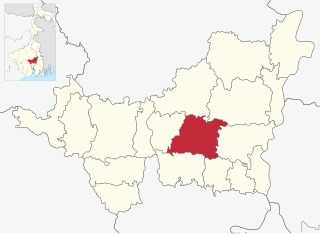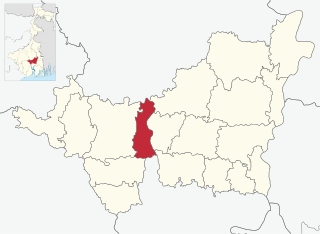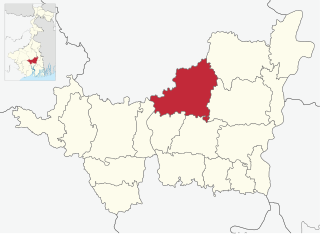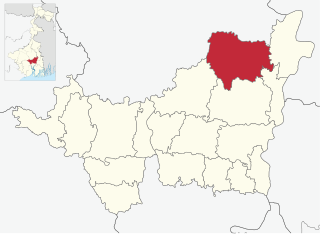Agriculture
This is a rich agricultural area with several cold storages. [16] Though rice is the prime crop of the district, the agricultural economy largely depends on potato, jute, vegetables, and orchard products. Vegetable is a prize crop in the blocks of Haripal, Singur, Chanditala, Polba and Dhaniakhali being grown in a relay system throughout the year. Though potato is cultivated in all the blocks of this district Dhaniakhali, Arambagh, Goghat, Pursurah, Haripal, Polba-Dadpur, Tarakeswar, Pandua and Singur contributed much of its production of this district. [17]
Some of the primary and other hats or markets in the Polba Dadpur block area are at: Balagar Sripur, Halusai, Harit, Kashwara, Mahansi, Polba, Ramnathpur and Gotu. [18]
| Important Handicrafts of Hooghly District |
|---|
- Zari Work on Sari - Pandua, Pursurah, Jangipara, Tarakeswar and other blocks - 3,000 families involved
- Chikon Embroidery – Babnan, Pandua, Singur - 2,500 families involved
- Silk and Cotton Printing – Serampore (Chanditala) - 300 families involved
- Brass and Bell Metal – Manikpat, Goghat, Arambagh - 150 families involved
- Conch Shell – Pandua, Khanakul, Makla, Chandannagar
- Jute Diversified Product – Baidyabati, Mogra
- Terracota – Chinsurah, Chandannagar, Baidyabati, Mogra
Source:District Human Development Report 2010: Hooghly P. 67 |
The Tebhaga movement launched in 1946, in 24 Parganas district, aimed at securing for the share-croppers a better position within the existing land relation structure. Although the subsequent Bargadari Act of 1950 recognised the rights of bargadars to a higher share of crops from the land that they tilled, it was not implemented fully. Large tracts, beyond the prescribed limit of land ceiling, remained with the rich landlords. From 1977 onwards major land reforms took place in West Bengal. Land in excess of land ceiling was acquired and distributed amongst the peasants. [19] Following land reforms land ownership pattern has undergone transformation. In 2013-14, persons engaged in agriculture in Polba Dadpur CD Block could be classified as follows: bargadars 8.11%, patta (document) holders 7.58%, small farmers (possessing land between 1 and 2 hectares) 3.02%, marginal farmers (possessing land up to 1 hectare) 15.88% and agricultural labourers 65.41%. [14]
Polba Dadpur CD Block had 146 fertiliser depots, 54 seed stores and 61 fair price shops in 2013-14. [14]
In 2013-14, Polba Dadpur CD Block produced 47,181 tonnes of Aman paddy, the main winter crop from 17,460 hectares, 14,718 tonnes of Boro paddy (spring crop) from 6,905 hectares, 658 tonnes of Aus paddy (summer crop) from 266 hectares, 4,719 tonnes of jute from 307 hectares, 262,084 tonnes of potatoes from 10,366 hectares. It also produced oilseeds and sugar cane. [14]
In 2013-14, the total area irrigated in Polba Dadpur CD Block was 17,486 hectares, out of which 4,710 hectares were irrigated by canal water, 1,510 hectares by tank water, 1,000 hectares by river lift irrigation, 2,120 hectares by deep tube wells and 8,146 hectares by shallow tube wells. [14]

















